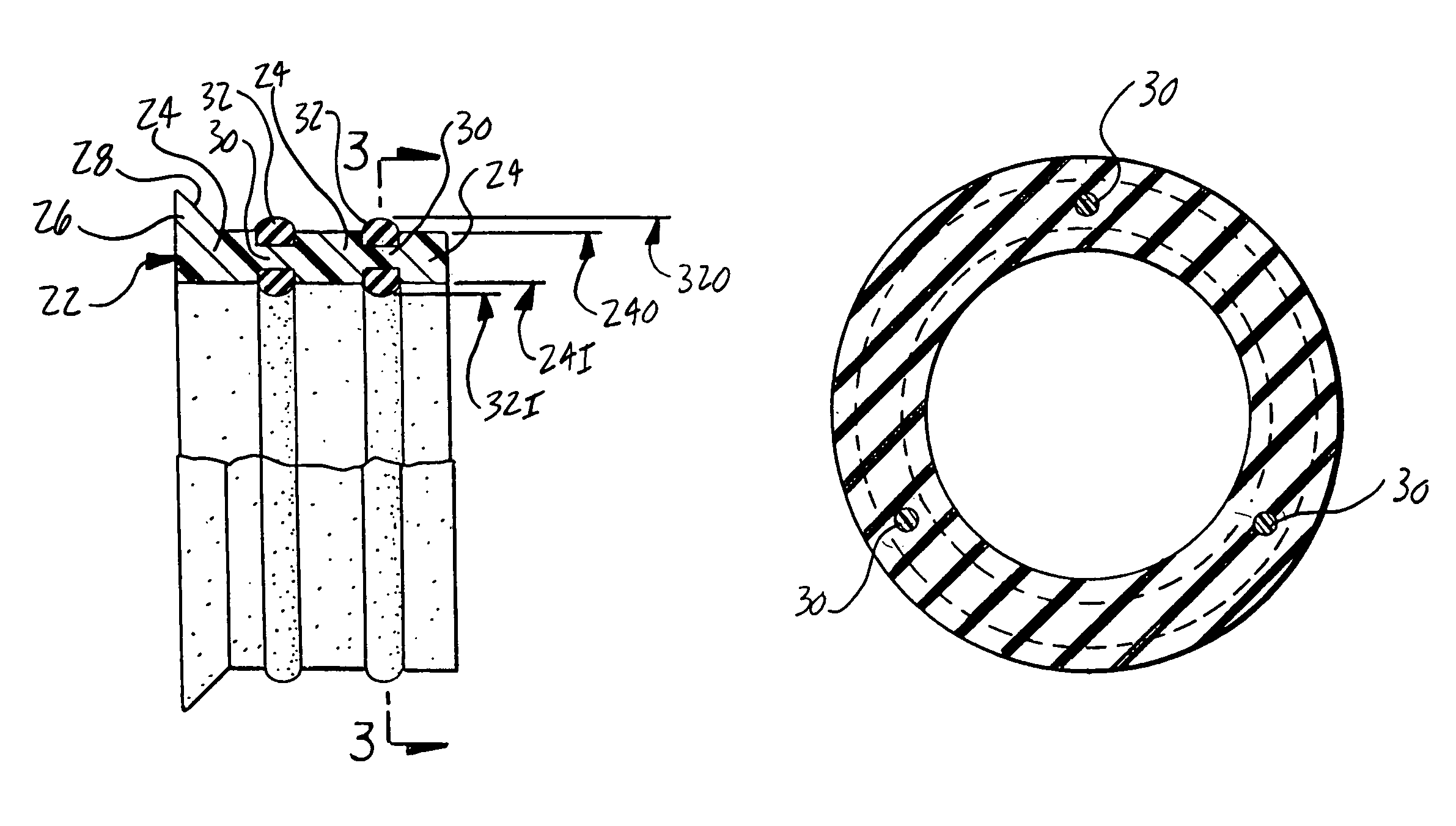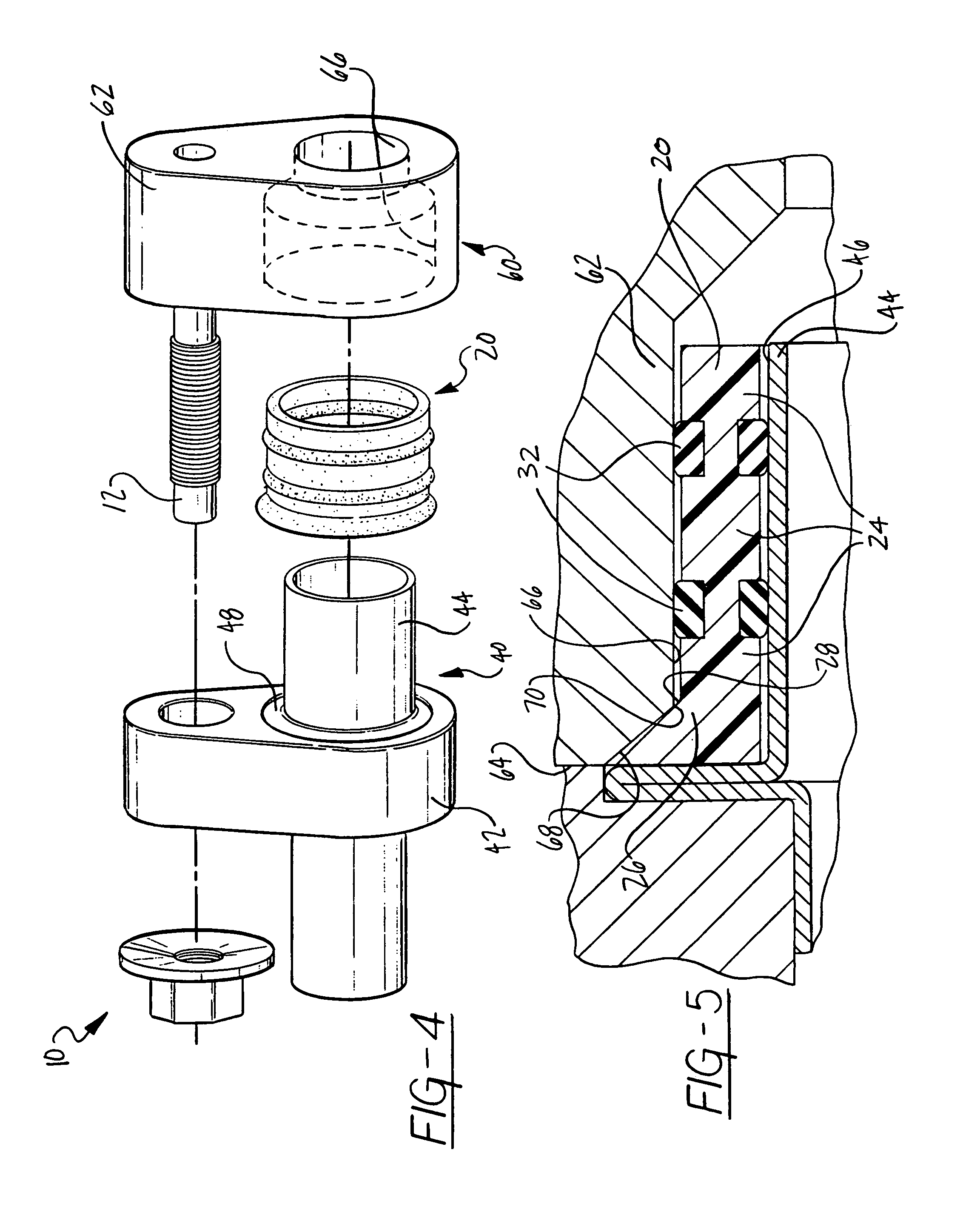Composite sleeve for sealing a tubular coupling
a tubular coupling and sealing technology, applied in the direction of hose connection, coupling, cable termination, etc., can solve the problems of large process cycle time and total piece cost, large cost of o-rings, and relatively unreliable o-rings, etc., to achieve simple and more controllable manufacturing process, no time-consuming, and high quality product
- Summary
- Abstract
- Description
- Claims
- Application Information
AI Technical Summary
Benefits of technology
Problems solved by technology
Method used
Image
Examples
Embodiment Construction
[0035]Referring to the Figures, and particularly to FIG. 1 there is shown a composite sleeve seal 20 according to the preferred embodiment of the present invention. As shown in FIG. 2, the composite sleeve seal 20 is made up of a body portion 22 having spaced apart collar sections 24 that are annular or ring-like in form. The collar sections 24 are preferably composed of a plastic material such as nylon, but may also be composed of a metal or composite material. One of the collar sections 24 may also have a tapered portion 26 having a tapered surface 28. The collar sections 24 have a common inside diameter 241 and outside diameter 240. The collar sections 24 are interconnected by three link segments 30 between each collar section 24. As shown in FIG. 3, the link segments 30 are circumferentially equally spaced apart, and extend axially from the collar sections 24. According to FIG. 2, the link segments 30 are integral with each of the collar sections 24 with which they connect such ...
PUM
| Property | Measurement | Unit |
|---|---|---|
| Time | aaaaa | aaaaa |
| Angle | aaaaa | aaaaa |
| Diameter | aaaaa | aaaaa |
Abstract
Description
Claims
Application Information
 Login to View More
Login to View More - R&D
- Intellectual Property
- Life Sciences
- Materials
- Tech Scout
- Unparalleled Data Quality
- Higher Quality Content
- 60% Fewer Hallucinations
Browse by: Latest US Patents, China's latest patents, Technical Efficacy Thesaurus, Application Domain, Technology Topic, Popular Technical Reports.
© 2025 PatSnap. All rights reserved.Legal|Privacy policy|Modern Slavery Act Transparency Statement|Sitemap|About US| Contact US: help@patsnap.com



